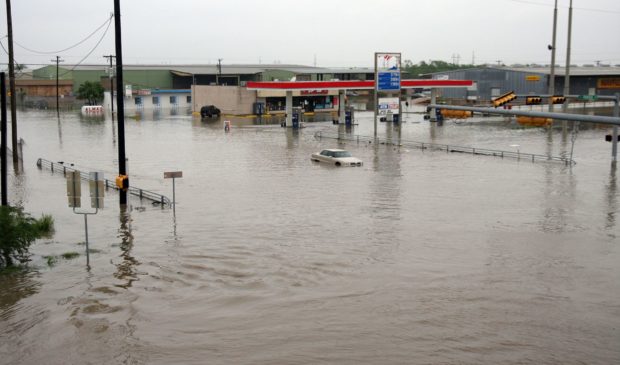City works to create more aggressive response to major floods
Tuesday, November 29, 2016 by
Cate Malek As Austin adjusts to the reality of major flooding on a regular basis, City Council is working to create a more comprehensive set of policies to respond to the damage caused by heavy rainstorms.
Last year, Council created a Flood Mitigation Task Force to take a deeper look into how to protect Austinites from the most severe effects of flooding. After an intense few months of meetings, the task force came up with over 200 recommendations for future policy. But because of fears that the group’s work would be forgotten, the Environmental Commission is pushing a Drainage Infrastructure and Flood Mitigation Committee that would work to create a more sustained and long-term response to major floods.
“(The task force) had this very aggressive and impressive scope,” said Matt Hollon of the city’s Watershed Protection Department. “But they were worried that their work was not going to continue. One of their recommendations (to Council) was you should make us permanent. And luckily the Environmental Commission stepped up.”
An example of the task force’s recommendations is a buyout policy for Austin residents whose properties flood so often it’s not worth them staying where they are. The task force also acknowledged that the city’s past attempts to buy out properties have not worked as well as they should have.
“The Task Force heard tragic and personal stories of loss and grief from people around the City who suffered flooding in their homes, often on more than one occasion,” it wrote in its final report. “Some have lost their homes and have been a part of the Buyout program, which has often been a slow and intimidating process, leaving people feeling frustrated and angry.”
But the task force also cautioned that buyouts are a last resort, writing, “The buyout process is a very emotional event for both the property owner and the neighborhood, appears to generally affect persons already struggling with Austin’s affordability issues, and can destroy communities.”
Among its many other recommendations, the task force suggested a slew of other policy changes, including improving drainage in the city, expanding the flood early warning system and expanding the Onion Creek Flood Study.
“In an urban area it would be a gross oversimplification of an extremely complex reality to adopt a management strategy of only removing development from flood-prone areas,” the task force wrote.
Only a small number of the original task force members will continue to serve on the new flood mitigation committee. The original group – which included two representatives from each of the 10 districts as well as two appointed by the mayor – was “a little unwieldy,” Hollon said. But, he added, it was also “exciting and (generated) more energy that way.”
After an intensive year of meetings, however, “A lot of them were completely exhausted and ready to go back to their private lives,” Hollon said. But five or six were motivated enough to continue.
The Environmental Commission’s proposal to keep the task force going still has to be approved by Council, but it has received strong support, city staff reports.
“It’s a fascinating topic,” Hollon said. “Although, of course, we’re biased because this is what we do.”
Photo by Jacinta Quesada (This image is from the FEMA Photo Library.) [Public domain], via Wikimedia Commons.
The Austin Monitor’s work is made possible by donations from the community. Though our reporting covers donors from time to time, we are careful to keep business and editorial efforts separate while maintaining transparency. A complete list of donors is available here, and our code of ethics is explained here.
You're a community leader
And we’re honored you look to us for serious, in-depth news. You know a strong community needs local and dedicated watchdog reporting. We’re here for you and that won’t change. Now will you take the powerful next step and support our nonprofit news organization?








